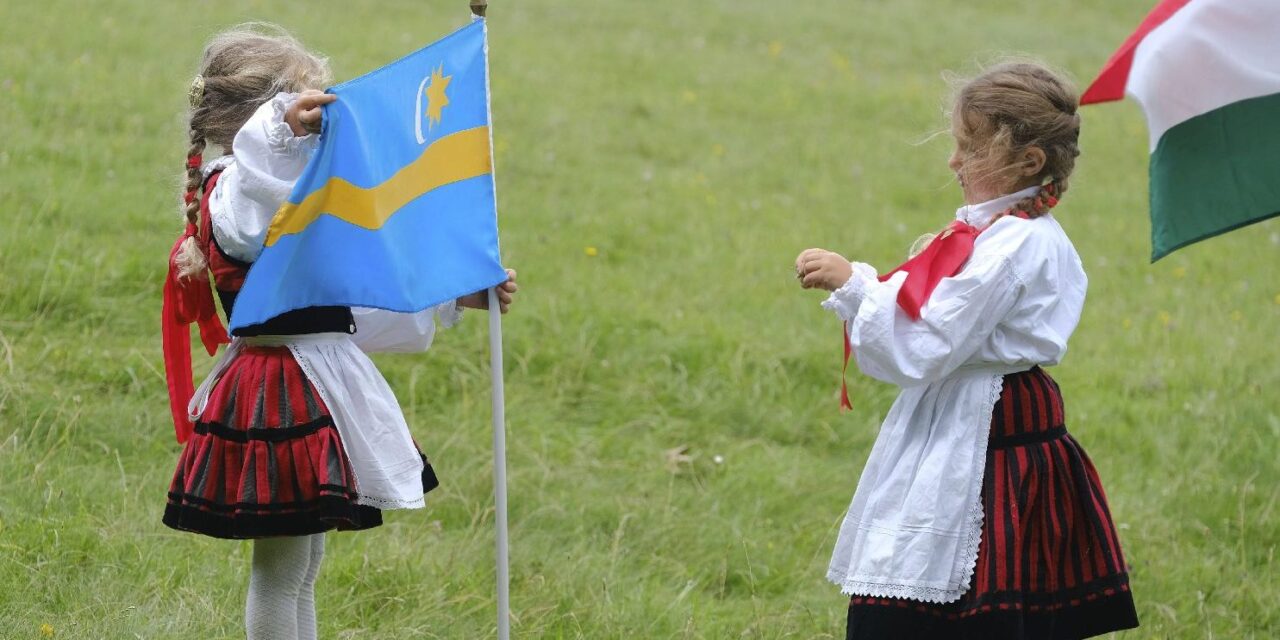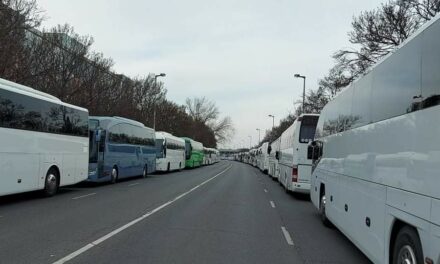The Trianon Peace Edict, signed on June 4, 1920, which ended the First World War, took 71 percent of the territory of the Kingdom of Hungary with a total area of more than 325,000 square kilometers, and more than half of its population. However, the commemoration of June 4 - despite our tragic losses - is not only directed to the past, but also to the future, as it is also the day of remembrance of the national unity and spiritual unity of Hungarians trapped in the territory of eight countries due to the Trianon Dictator.
According to the testimony of the Bible, in the second book of Moses, the Lord gave, among other things, the following command: " And tell your sons on that day. "
Yes, this is what we must do: tell from generation to generation what really happened at Trianon.
It must be said that the peace decree that ended the First World War took away 71 percent of the territory of the Kingdom of Hungary with a total area of 325,411 square kilometers, and more than half of its population.
As for the economy:
- 61.4 percent of the agricultural land,
- 88 percent of the wood stock,
- 83.1 percent of iron ore deposits,
- 100 percent of the salt mines,
- 99 percent of gold and silver mines,
- 65 percent of coal production,
- 60 percent of the iron and steel production capacity,
- 62.2 percent of the railway network,
- 64.5 percent of built roads,
- 55.7 percent of industrial estates,
- 67 percent of credit and banking institutions
came into the possession of the neighboring countries through a dictate disguised as peace.
And as a result, a third of the Hungarian nation, the 3.2 million Hungarians living in the land of our ancestors, also crossed the border.
The borders designated by the diktat separated ethnically Hungarian blocs and economically unified areas, cutting off Hungary from many of its economic resources and cultural centers, such as Bratislava, Nagyszombat, Komárom, Kassa, Nagyvárad, Arad, Timisoara, Cluj, Marosvásárhely or Szabadka. The list of our taken towns and villages could be long, very long.
After Trianon, only 38 percent of Hungary's former national wealth remained.
In addition, according to the peace treaty, he was allowed to pay reparations for another thirty years, for the war damage he caused, so to speak. With these territorial, ethnic and economic changes, Hungary became the biggest loser of the post-war settlement. No European nation has been afflicted with such peace but us.
How did we get here? How did the flower of corruption bloom and Hungary's destiny fulfilled?
At the outbreak of the First World War, our country could not be considered an independent state in the constitutional sense, since it was part of the dualistic, i.e. two, roughly independent Monarchy in terms of its internal legal system, but externally unified and led by one ruler. It follows not only that it was not an independent belligerent, but also that it did not have any diplomatic relations with the Entente.
Even the Armistice of Padua, which ended the hostilities on November 3, 1918, was concluded in the name of the Monarchy and not of Hungary. Ten days later, however, Mihály Károlyi negotiated with the representative of the Entente as the prime minister of Hungary, which had become independent by then. The second armistice agreement signed in Belgrade superseded the Padua agreement in many respects – to our detriment, of course.
In the first, the Hungarian army had to retreat behind the thousand-year border, but in the second, it had to take up a position much further back, behind the Szamos-Bestzterce-Maros-Baja-Pécs-Dráva line. In Belgrade, no similar demarcation line was established for the Highlands, at that time the thousand-year border remained in force there. The handful of Hungarian forces later had to retreat behind the Danube-Ipoly line based on the demand presented in the list of the French general Berthelot Vix. Thanks to this, the Czechs occupied Northern Hungary.
The key to the situation is to be found in the Belgrade Convention, i.e. the second armistice agreement concluded with the Entente, since it was here that the country's military strength was broken, limiting it to six infantry and two cavalry divisions.
This is very important because after disarming Hungary, it was no longer able to defend itself from its neighbors, which attacked it from three directions at the same time.
However, the armistice agreement did not mean that bilateral diplomatic relations based on international law were established between our country and the Entente. The relationship between the two parties took place in the form of military missions, which the Entente sent to Budapest to carry out a specific task. After the fall of the Soviet Republic, the Entente delegation that arrived in Budapest in the fall of 1919, for example, was entrusted with the task of creating the so-called concentration government, which the winners would invite to the Paris Peace Conference.
However, the question of the borders had already been decided by then, they decided about us, but without us. The Council of Foreign Ministers accepted it on June 11, 1919, and the following day the Supreme Council approved the final Czechoslovak-Hungarian and Romanian-Hungarian border lines. The members of the Hungarian government were not even invited to the substantive part of the peace negotiations, and the Entente advocated the establishment of a concentration government only in order to be the one to appoint the delegation that would accept and sign the peace terms.
Albert Apponyi was the leader of this delegation.
Among the members of the sixty-six Hungarian delegation sent to Paris are two later prime ministers: István Bethlen and Pál Teleki. The Hungarian delegates went to Paris prepared. The internationally renowned geographer, Pál Teleki, for example, worked from the autumn of 1918 on his work, later referred to as the "carte rouge", which depicted the Kingdom of Hungary based on the nationality data of 1910.
It got its name from the fact that the accommodation area of the Hungarian nation was marked in red. The preparation of the Hungarian delegation was also helped by the fact that at the beginning of 1920 the text of the German, Austrian and Bulgarian peace was already known, which was analyzed and it was established that many of its articles were identical. Based on this, it could be guessed that the victors of the war would prescribe the same for us.
On January 5, 1920, the Hungarians set off from Budapest's Keleti railway station. In Paris, however, the delegation was received coldly, and they were made to feel that they were seen as losers in everything. They were assigned accommodation in a suburb of the French capital, their movements were restricted, they could only leave the garden of their hotel after prior notification and approval, accompanied by an army of detectives.
The victors wanted to prevent the Hungarians, who were practically prisoners, from meeting anyone. The Hungarian delegates handed over their credentials immediately after their arrival, already on January 8, which the Entente did not accept until January 14. This is important because the winners finalized the text of the peace draft while the Hungarians were waiting.
The comments of the delegation led by Apponyi could therefore not be taken into account by the Entente just for formal reasons, since the final version of the text had already been prepared. The Hungarian delegation received the peace terms on the 15th.
Albert Apponyi had to prepare the thick text containing 364 paragraphs in less than 24 hours in order to be able to give his comments in English and Italian on behalf of Hungary on January 16.
Posterity calls this speech the Trianon defense speech.
"If Hungary were to be put in the position of having to choose between accepting or rejecting this peace, it would actually answer the question: is it right to commit suicide in order not to be killed"
(excerpt from Albert Apponyi's defense speech).
Author: Ákos Jezsó / hirado.hu
The full article can be read by clicking HERE
Photo: MTI/Nándor Veres













